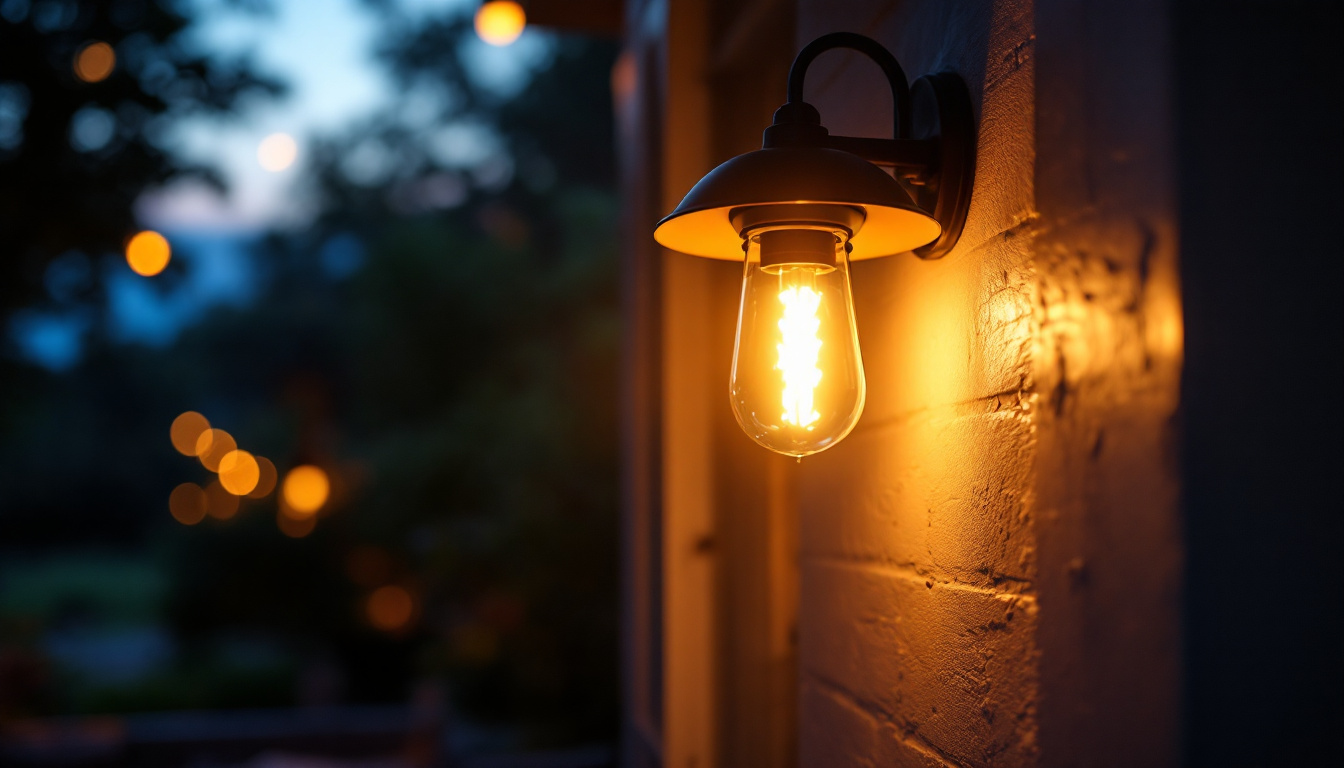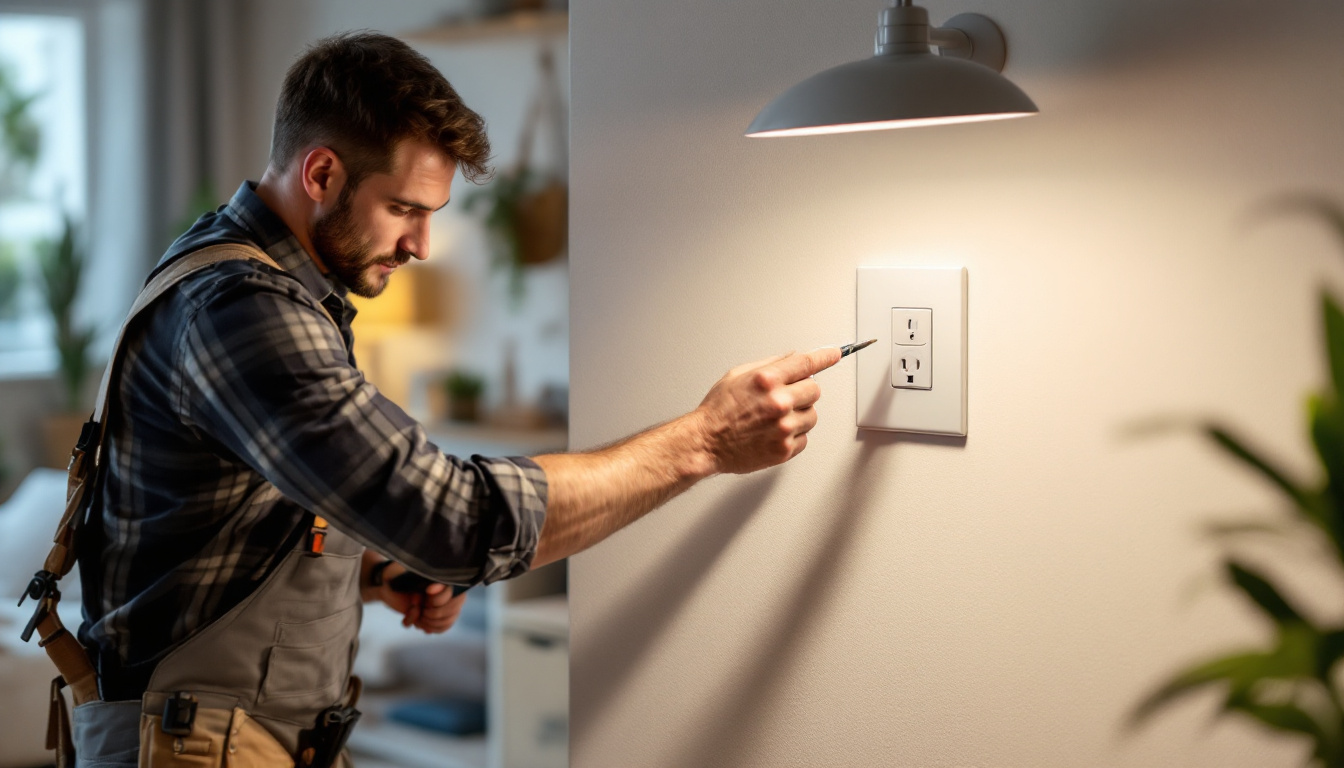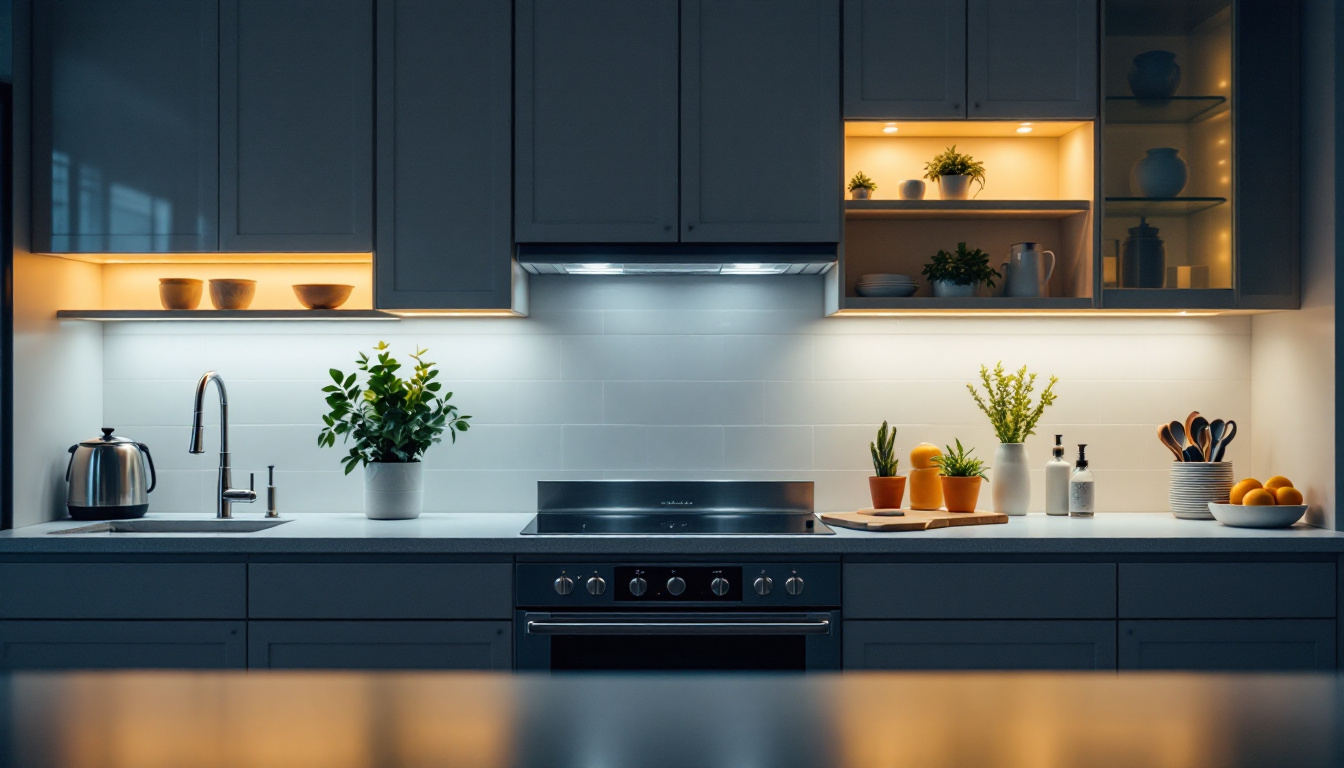
In the ever-evolving world of lighting design, LED sconce light fixtures have emerged as a popular choice for both residential and commercial spaces. Their versatility, energy efficiency, and aesthetic appeal make them a go-to option for lighting contractors. However, understanding the best practices for selecting, installing, and maintaining these fixtures is crucial for ensuring client satisfaction and optimal performance. This article delves into essential insights and strategies that lighting contractors should consider when working with LED sconce light fixtures.
LEDs, or Light Emitting Diodes, differ significantly from traditional incandescent or fluorescent bulbs. They convert electrical energy directly into light, resulting in higher efficiency and lower energy consumption. This technology not only reduces electricity bills but also extends the lifespan of the fixtures, making them a cost-effective choice in the long run.
Moreover, LEDs produce less heat compared to their incandescent counterparts, which enhances safety and reduces the risk of overheating in enclosed spaces. This characteristic is particularly important for sconce applications where fixtures are often mounted close to walls or decorative elements. Additionally, the durability of LEDs is noteworthy; they are less prone to breakage due to their solid-state construction, making them a more reliable option for high-traffic areas or outdoor settings where traditional bulbs might fail more frequently.
Furthermore, the versatility of LED technology allows for a range of applications beyond simple illumination. With advancements in smart technology, many LED fixtures now offer features such as dimming capabilities and color-changing options, allowing users to customize their lighting experience to suit different moods or activities. This adaptability is revolutionizing how we think about lighting in both residential and commercial spaces, leading to innovative designs that enhance the aesthetic appeal of any environment.
When selecting LED sconce fixtures, it is essential to consider the color temperature, measured in Kelvin (K). Warm white LEDs (2700K-3000K) create a cozy atmosphere, making them ideal for residential applications, while cool white LEDs (4000K-5000K) are better suited for commercial settings that require bright, clear lighting.
Additionally, the Color Rendering Index (CRI) is a critical factor in determining how accurately colors appear under artificial lighting. A CRI of 90 or above is recommended for spaces where color accuracy is paramount, such as art galleries or retail environments. The importance of CRI cannot be overstated, as it directly impacts how products are perceived by customers. In retail, for instance, the right lighting can enhance the visual appeal of merchandise, encouraging purchases and creating a more inviting shopping experience.
Moreover, the advancements in LED technology have led to the development of tunable white LEDs, which allow users to adjust the color temperature throughout the day. This feature can mimic natural daylight patterns, promoting well-being and productivity in workspaces. Research has shown that exposure to different color temperatures can influence mood and alertness, making tunable LEDs an excellent choice for offices, schools, and healthcare facilities where optimal lighting conditions are essential for performance and comfort.
When selecting LED sconce fixtures, the design should align with the overall aesthetic of the space. Fixtures come in a variety of styles, from modern and minimalist to traditional and ornate. Understanding your client’s design preferences and the architectural elements of the space will guide you in choosing the right fixtures.
Furthermore, consider the size and scale of the sconce in relation to the wall and surrounding decor. Oversized fixtures can overwhelm a small space, while tiny sconces may get lost on expansive walls. Striking the right balance is key to achieving a harmonious look. Additionally, the finish of the sconce can greatly influence the ambiance; for example, a polished brass finish can add a touch of elegance, while matte black can create a more contemporary feel. Don’t forget to consider how the color and texture of the sconce will interact with other materials in the room, such as wood, stone, or fabric, to create a cohesive design narrative.
The placement of LED sconces is as important as the fixtures themselves. Generally, sconces should be mounted at eye level, typically between 60 to 72 inches from the floor. This height ensures optimal illumination and visibility without causing glare.
In addition, consider the function of the space when determining placement. For instance, sconces installed in hallways should provide adequate illumination for safety, while those in living areas may focus more on ambiance. Thoughtful placement enhances both functionality and aesthetics. Moreover, think about the direction of the light; upward-facing sconces can create a soft wash of light that enhances the room’s height, while downward-facing fixtures can provide focused light for tasks such as reading or working. Layering different types of lighting, including sconces, can create depth and interest in a room, making it feel more inviting and dynamic.
Before installation, it is crucial to assess the electrical capacity of the existing wiring. LED fixtures often require compatible dimmers and drivers to function optimally. Ensure that the electrical system can handle the load and that all components are rated for LED use to avoid flickering or premature failure.
Moreover, follow local building codes and regulations when installing sconces. This includes ensuring proper grounding and using appropriate mounting hardware to secure the fixtures safely. A well-executed installation not only enhances performance but also minimizes the risk of future issues.
When wiring LED sconces, it is essential to use the correct gauge wire and connectors to ensure safety and efficiency. The use of low-voltage wiring may be necessary for certain fixtures, particularly those designed for specific applications like outdoor lighting.
In addition, consider the use of smart technology. Many modern LED sconces are compatible with smart home systems, allowing for remote control and automation. Incorporating this technology can enhance the user experience and provide added convenience for clients.
While LED fixtures are known for their longevity, regular maintenance is still essential to ensure optimal performance. Dust and debris can accumulate on the surface of the fixtures, diminishing light output and affecting overall aesthetics. A simple cleaning routine with a soft cloth can help maintain their appearance and functionality.
Additionally, check for loose connections or signs of wear in the wiring periodically. Addressing these issues promptly can prevent more significant problems down the line, ensuring that the fixtures remain safe and effective.
Even with proper installation and maintenance, issues may arise with LED sconces. Flickering lights can indicate a problem with the dimmer switch or the compatibility of the fixture with the existing electrical system. In such cases, it may be necessary to replace the dimmer or consult with an electrician to assess the wiring.
Another common issue is color shifting, where the light output changes color over time. This can be attributed to poor-quality fixtures or incompatible components. Replacing the affected fixture with a higher-quality option can resolve this issue and restore the desired ambiance.
One of the most significant advantages of LED sconce fixtures is their energy efficiency. By using significantly less energy than traditional lighting options, LEDs contribute to lower energy bills and reduced carbon footprints. This is particularly appealing to environmentally conscious clients looking to make sustainable choices in their homes or businesses.
Incorporating energy-efficient lighting solutions can also qualify clients for various rebates and incentives offered by utility companies. Staying informed about these opportunities can enhance the value of your services and provide clients with added financial benefits.
LEDs are not only energy-efficient but also environmentally friendly. Unlike traditional bulbs, LEDs do not contain harmful materials such as mercury, making them safer for disposal. Encouraging clients to choose LED sconces contributes to a more sustainable future and aligns with growing consumer demand for eco-friendly products.
Furthermore, the long lifespan of LED fixtures means fewer replacements, reducing waste over time. This aspect of sustainability can be a compelling selling point when discussing lighting options with clients.
The rise of smart technology has transformed the lighting industry, and LED sconces are no exception. Many modern fixtures now come equipped with smart features, allowing users to control lighting remotely through mobile apps or voice commands. This innovation enhances convenience and customization, enabling users to create the perfect ambiance for any occasion.
Additionally, smart LED sconces can integrate with home automation systems, allowing for programmed schedules, dimming options, and even color changes. As a lighting contractor, staying abreast of these trends can position you as a forward-thinking professional who offers clients the latest in lighting technology.
Another trend gaining momentum is the integration of LED sconces into architectural features. Designers are increasingly incorporating lighting into walls, niches, and other structural elements, creating seamless and visually striking effects. This approach not only enhances the aesthetic appeal of a space but also provides functional lighting without the need for traditional fixtures.
As a contractor, being knowledgeable about these architectural integrations can open up new avenues for collaboration with designers and architects, ultimately expanding your service offerings and client base.
LED sconce light fixtures represent a significant advancement in lighting technology, offering contractors a versatile and efficient solution for various applications. By understanding the nuances of LED technology, selecting the right fixtures, adhering to best installation practices, and staying informed about emerging trends, lighting contractors can provide exceptional service and value to their clients.
As the demand for energy-efficient and aesthetically pleasing lighting continues to grow, embracing LED sconce fixtures will not only enhance your portfolio but also contribute to a more sustainable future. By implementing the best practices outlined in this article, contractors can ensure that their projects shine brightly for years to come.
Ready to elevate your lighting projects with the best LED sconce fixtures on the market? Look no further than LumenWholesale, where we provide lighting contractors with superior, spec-grade lighting solutions at unbeatable wholesale prices. Our commitment to quality and affordability means you can deliver exceptional value to your clients without compromising on performance. Plus, with free shipping on bulk orders, you can stock up on premium lighting effortlessly and cost-effectively. Don’t miss out on the perfect combination of quality, affordability, and convenience. Discover the difference at Wholesale Lighting at the Best Value and make your next project shine with LumenWholesale.

Discover the essential resources lighting contractors rely on to master porch lamp installations.

Discover how lighting contractors can enhance their projects by integrating light switches with outlets.

Discover how Arena Horse is revolutionizing the lighting industry for contractors by streamlining processes and enhancing efficiency.

Discover expert tips and innovative techniques for lighting contractors to effectively install under kitchen cabinet lights.